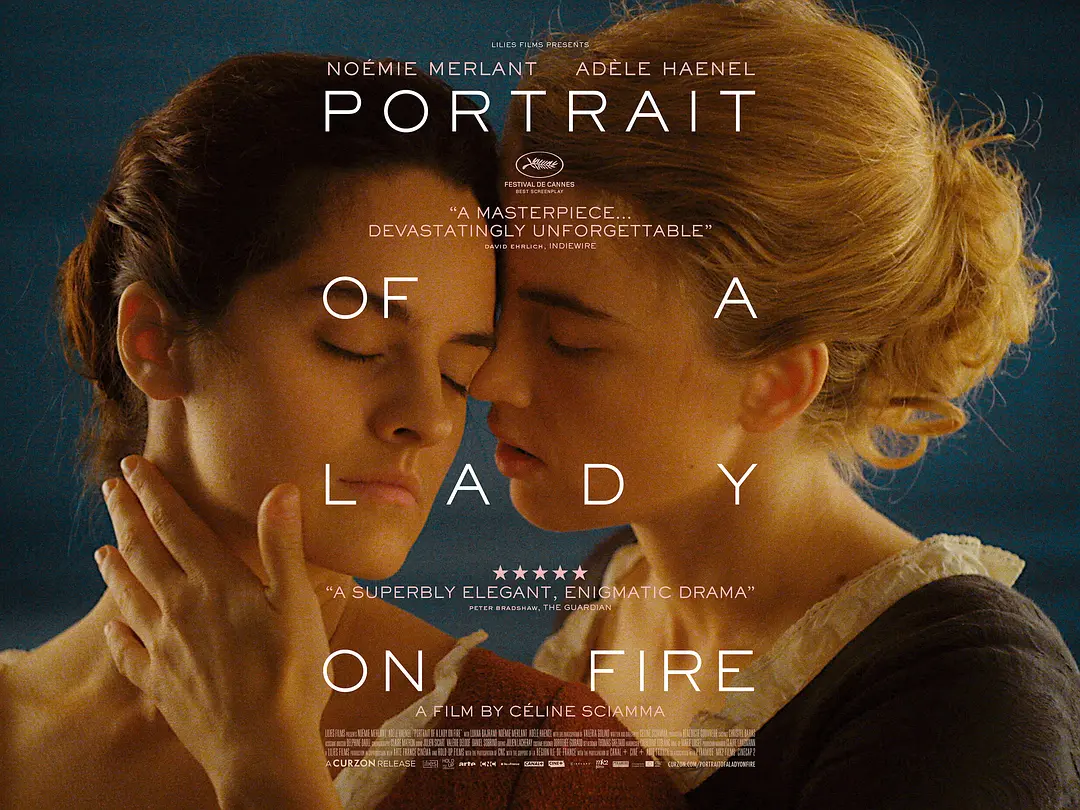The night before the farewell, Eloise says she will remember the moment when she first tried to kiss Marianne. Marianne asks her when it was, but she doesn’t answer. At first I thought that moment came on the night she asked Marianne if she had ever tasted love, but later I thought it should have been earlier, as early as when Marianne learned that she only listened to the organ and not the symphony, while trying to explain and play the “Four Seasons”, which was a bit out of shape. At that time, Marianne was playing in a panic and could not remember the score, while Eloise was unwilling to take her eyes off her face.That’s why she said to Marianne after returning from a solo trip:”When I’m alone, I feel the freedom you talked about, but at the same time I miss you.”Here “missed you” is the Russian translation. In solitude, I felt the the liberty you spoke of.I remembered your words again, but they reminded me of your absence.At that time, Eloise, under the cold guard of her appearance, probably believed in her heart that Marianne was just a walking companion, and a kind and beautiful companion who was always watching her apprehensively and telling her about Milan’s wonderful life in order to relieve her anxiety.

So when Marianne confesses her identity to her, the strong feeling of being deceived makes Eloise once again put on the cloak of coldness and anger: no wonder you have that look in your eyes; no wonder you try so hard to convince me of the beauty of “exile” in a distant city, but only out of guilt. And her disbelief in the face of the first portrait is more an expression of the same emotion. It is not only herself in the portrait that is unfamiliar and distorted, but also the Marianne she has been living with for several days. The person she once felt so close to was suddenly so distant.But still like her ah. That’s why she asked her to stay and paint again.What followed was a mixture of sweetness and heartbreak. Careful but difficult to contain the desire and impulse, like Eloise asleep, Marianne quietly took a pen and paper and sat down to draw her portrait. In the one-way gaze of unexpectedly looked back at the helplessness and joy, in a few abrupt restraint, the viewer felt a long time hard to cool the heat.Later, we learn that Eloise has kept Marianne’s self-portrait, and we see her weeping alone in the concert hall listening to the melody Marianne played to her in the first place. Is she happy? Was she unhappy? Is it true that one can only occasionally find some consolation in talking to oneself about the things that connect with Marianne? Marianne seems to be the more fortunate party, twice confirming that the memory is still with her lover, years after she said goodbye to Eloise. But which is more comforting: relief or heartache?Fortunately, the film seems to leave a window open, so that this fulfillment and heartbreak does not go unnoticed: the female student in the studio seems to be vaguely aware of what is going on, and first she inadvertently takes out the “Portrait of a Burning Woman” that Marianne put in the storage room, and then she perceives and depicts the teacher’s repressed sorrow in her painting exercises.She sees the teacher’s preoccupation or, alternatively, thinks of her own.Just as we look longingly at Eloise’s weeping face at the end of the film, we may also shed tears, but cannot say whose tears are blurring whose vision. And outside of Marianne’s perspective, how are we not thinking of the person in our own memories.
